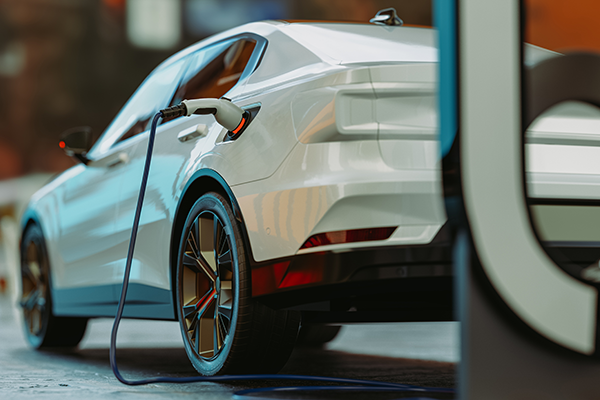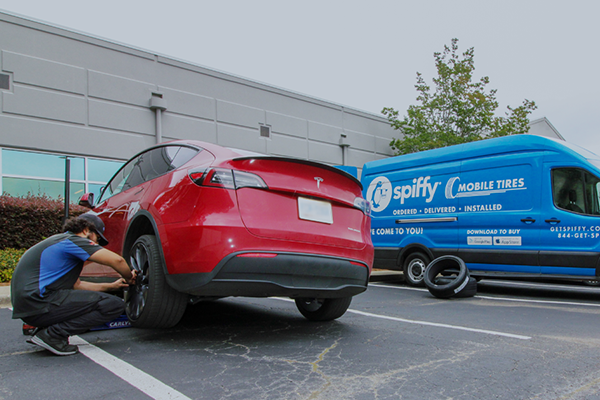As electric vehicles become increasingly popular, many states are beginning to enact regulations that favor Zero-Emission Vehicles (ZEVs) over traditional gasoline-powered cars. California, in particular, has been a leader in this area, recently announcing that it will end sales of gasoline-only cars by 2035. This is a huge change for the automotive industry and one that will have a significant impact on CEOs and fleet managers.
We sat down with Spiffy CEO, Scot Wingo about the importance of electric vehicles and what this shift means for the future of the automotive industry.
What are your thoughts on the states banning the sale of new gas powered cars by 2035?
On Aug 25th, California announced that they will increasingly raise the bar on the percentage of vehicles that have to be EVs (they call them ZEVs - zero emission vehicles which opens the door to maybe hydrogen as another energy source vs. electricity). The plan goes 35% by 2026, 68% by 2030, and 100% by 2035.
First, it’s important to point out that it’s 2022, so this is 13yrs in the future. Also, for context, I’ll share that I’ve been driving an EV for the last 10yrs.
One of the really interesting aspects of the USA is that we can essentially run 50 experiments simultaneously. I view this as a really interesting experiment by one state, so it’s important to point out that this is isolated so far to California.
Overall, I think setting a goal to get to 100% EVs is a good long-term goal. I doubt they will be able to get there, but in business, we frequently set a BHAG - Big, Hairy, Audacious Goal, knowing that we probably won’t get there in the timeframe we put out there, but it has the effect of getting folks to think about it, and while the timing may not be right, the end goal becomes more achievable because you set the BHAG.
In summary, this is a BHAG in one state that is an interesting data point and definitely gets your attention. To put it in perspective, according to BloombergNEF about 10% of new vehicles in California are EVs and California counted for 16.3% of all EVs sold in 2022.

Do you think this ban will have a negative impact on the automotive industry?
I think in the short term, there will be some pain, but long-term it will be a net positive for the industry. In the short-term, we as an industry and society have a lot of work for EVs to be mainstream. The big four challenges for selling EVs are:
- Lack of EV variety and supply - Tesla is far ahead of the traditional ICE manufacturers who are struggling to launch their EVs because of the overall chip and supply chain problems. We have been on the cusp of 10+ new EV models for the last 3yrs, but aren’t seeing much progress there. This will hopefully moderate next year.
- Range anxiety - In consumer surveys, one of the top reasons consumers have concerns about EVs is the range for a charge. We can solve this with longer range, better battery life, and charging infrastructure.
- Charging Infrastructure - Compared to gas stations, our EV charging infrastructure (the last mile portion) is very very early. Tesla’s supercharger network is pretty mature, but can barely keep up with the demand from Tesla owners, much less a significantly larger population.
- Grid infrastructure - It was ironic that the same week California’s move to 100% ZEV was announced that they also asked citizens to turn off their HVAC systems and not charge their EVs because the grid is maxed out. That obviously has to be fixed before California can get to 100% ZEV.
In their announcement, California also announced they are spending $10b on infrastructure, hopefully, they can deploy that wisely and address the last-mile and long-haul/grid aspects of the infrastructure challenges.
What do you think will happen to gasoline prices due to this ban?
Wow, it’s hard to predict gas prices in 30 days, much less 13 years. As a hobby economist, I think from a macro long-term perspective what will happen is as our personal and commercial fleets move from ICE to EV, the demand for gas will go down, but also, gas is expensive to produce, and the producers are very well run companies.
Therefore, as demand decreases from this move to EVs, the producers will decrease production, and thus prices will be stable. Then even longer-term, as the ICE fleet becomes kind of a nostalgic/collectible market, gas prices will go up significantly because the audience will be very small, and it will be a specialty product produced to keep the last couple million ICE vehicles rolling.
How do you think this ban will impact car owners and fleet managers?
Car owners who don’t want to move to EV will have to either keep their ICE vehicles operating past the deadline or buy them from other states.
“Fleet owners have the biggest up-hill battle. Today the bulk of EVs are passenger vehicles. At Spiffy, like many urban fleets, we use a van platform. There are very limited options to replace these ICE fleets with EVs, so there is a lot of work there. Then as you look at even bigger vehicles like 18 wheelers/semi trucks, Tesla is only in a prototype phase. Those two parts of the fleet market seem unlikely to be able to meet the 2035 deadline.”
Do you have any concerns about this ban?
Nothing we haven’t covered already.
Will there be a significant change in how Spiffy addresses EV mobile service?
One of the best parts of EV ownership is the huge time savings. Not only do you get to avoid the regular gas station trips (most EV owners charge overnight at home, so you don’t go to chargers typically except on road trips), but you also only have to bring your vehicle in about once a year for a check-up. That being said, I haven’t seen this discussed widely but one of the surprises around EV cost of ownership is they burn through tires in about half the time than ICEs.
On ICE vehicles, tires are rated for 40,000-60,000 miles. On average, people drive between 12,000 and 15,000 miles a year. So 3-5yrs on average. EVs are much heavier than ICEs, and the electric motor has more torque than an ICE. In my experience (and I haven’t found significant data on this yet, but ask any EV owner, and you’ll get a similar experience), my tires last 20-30k at best. Therefore, I’m spending 2x on tires for an EV than an ICE.
In isolation, that sounds crazy, but remember, I spend 0 on gas, so an EV still has a lower total-cost of ownership, especially when you factor in energy. Outside of energy, you save on oil changes but more than make up for that on increased tire usage, so the cost of ownership is higher.

Now let’s tie this back to Spiffy.
Casual Spiffy followers may not realize that Spiffy not only has wash/detail and oil change, but our fastest growing services are tires and brakes. Based on that, we feel like we’re in good shape for EVs. In fact, if you look at the % of EVs to ICEs we over index on services for EVs. I think what’s going on there is that EV owners have more disposable income for their vehicles, and because you’re not constantly going to gas stations, EV owners don’t have the casual "I’ll run through the tunnel car wash at the gas station" experience. Also, many EVs have advanced cameras that don't do well in physical car washes.
Outside of those traditional auto services, Spiffy is working on a suite of future Vehicle 2.0 services, including mobile EV charging, AV services, and we work closely with many companies in the ‘changing ownership models’ segment.
How do you think the automotive industry can prepare for a future without gas cars?
To summarize:
- We need 100X+ supply and many, many more models
- We need charging infrastructure
- We need grid improvements
- We need range improvements
- We’re going to need a lot of tires
- If you’re 100% oil change or gas, that’s going to be a tough spot. Diversify immediately.
- You must explore new service models because the automotive service industry will change more in the next 10yrs than in the last 100.
Electric vehicles are an essential part of the future of the automotive industry. They're better for the environment and more efficient than gasoline-powered vehicles. This shift towards electric vehicles is a big deal for the automotive industry, and Spiffy continuously seeks ways to innovate.
At Spiffy, we’re biased, but we think we have a pretty solid vision of where this is going, so we’re building it today. Whether you’ve started exploring how to electrify your fleet or are facing square one, now is the time to learn and prepare for the rapidly approaching future of fleet management. Missed our webinar on the future of EV fleets? Watch it on demand! Ready to learn how Spiffy can work for your fleet?
Posted in Business, Fleet, Vehicle 2.0





